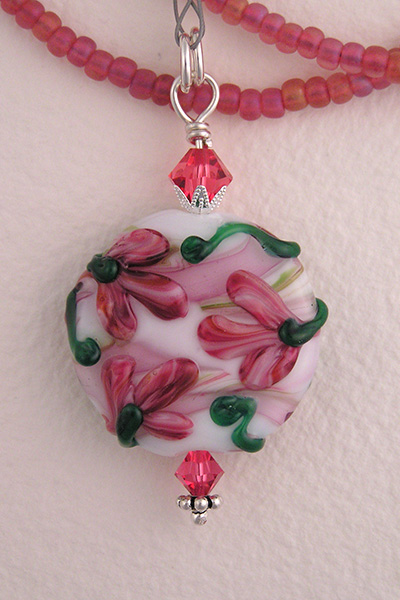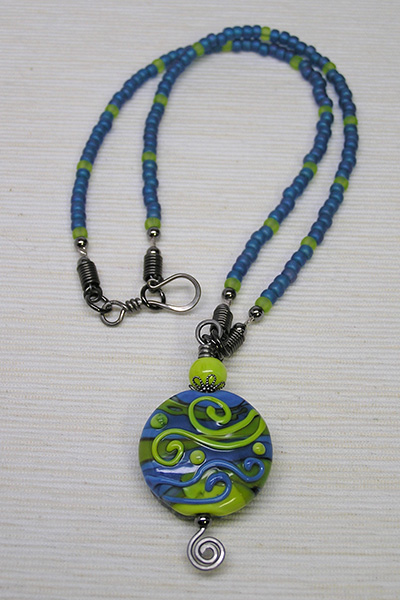You’re accessing archived content
This is archived content from the UIT website. Information may be outdated, and links may no longer function. Please contact stratcomm@it.utah.edu if you have any questions about archived content.
Lani Twitchell turns up the heat for her artwork
By Emily Rushton
Not many people have a hobby that puts them in proximity to 5,000-degree temperatures, but Lani Twitchell’s glass beadwork does just that. And for her, it’s not just a hobby – it’s a business.
Twitchell is a user experience designer in University Support Services and has been employed at the University of Utah for 23 years. Her passion in glass beads and making jewelry developed in junior high, when her mom would take her along to jewelry classes in the evenings. Twitchell learned the basics in those classes and has been making her own jewelry ever since.
“For a while I was making jewelry using purchased beads. And then I saw some really incredible glass beads, wondered how they were made, and found out that you could make them yourself. So that was my start,” said Twitchell.
The only place she could build a studio was in her basement, so for safety reasons she had to wait until the torch manufacturers developed torches that could work with natural gas instead of propane. “At that point I thought, OK, I can put a studio in my basement now.”
She set up her studio in 2008 and has been making her own glass beads since then.
To create a glass bead, Twitchell starts with a piece of soft glass in rod form, about 1/4” in diameter. A section of steel welding rod (a mandrel) is dipped in a clay material, which allows the bead to be removed from the steel when it cools. She then heats the glass in the torch until it melts “like stiff honey” – this is where temperatures can reach from 4,600 to 5,300 degrees – and then winds it around the steel rod. Once the bead is created, it’s ready to be decorated and shaped in a unique way. This entire process can take her anywhere from 15 minutes to 2 hours, depending on the intricacy of the colors and design. “You can decorate it with glass dots, thinly pulled glass ‘stringers,’ or ground glass – but it’s all done in the heat,” she said.

Once completed, the bead is put in a kiln to anneal, which allows it to cool slowly and removes internal stresses. “It’s an important step,” said Twitchell. “A lot of inexpensive beads that come from some international sources aren’t annealed, and they’ll break.”
Twitchell finds creative inspiration for her beads and jewelry by studying different color combinations, natural objects, and other people’s work. She especially enjoys how soothing the bead-making process is. “You start working with the glass, and the glass starts flowing, and things are going really well – it’s just a hypnotic process.”
Twitchell creates and sells necklaces, bracelets, earrings, and pins. You can find more photos and information on her website, www.beadybee.com.
She also offered some advice for any prospective glass bead enthusiasts: in Salt Lake, there’s a local group called the Wasatch Area Lampwork Artists that meets monthly.
“It’s a really fun group of people,” she said. “Anyone would be welcome to come.”

